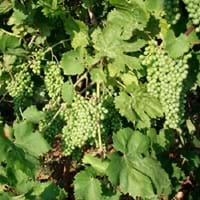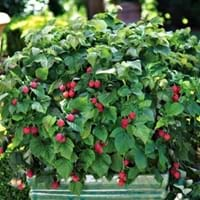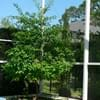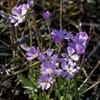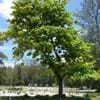Life Span
Perennial
Perennial
Origin
Hybrid origin
Hybrid origin
Types
Not Available
not available
Habitat
Cold Regions
disturbed sites, Forest edges, old gardens, Riverbanks, Roadsides
USDA Hardiness Zone
5-9
4-9
Sunset Zone
1a, 1b, 2a, 2b, 3a, 3b, 4, 5, 6, 7, 8, 9, 10, 11, 14, 15, 16, 17, 18, 19, 20, 21, 22, 24
A1, A2, A3, 1a, 1b, 2a, 2b, 3a, 3b, 4, 5, 6, 7, 8, 9, 10, 11, 12, 13, 14, 15, 16, 17, 18, 19, 20, 21, 22, 23, 24
Habit
Vining/Climbing
Upright/Erect
Flower Color
Not Available
White
Flower Color Modifier
Bicolor
Bicolor
Fruit Color
White, Light Green
Red
Leaf Color in Spring
Green, Light Green
Green
Leaf Color in Summer
Green, Gray Green
Green
Leaf Color in Fall
Yellow, Red, Gray Green, Bronze
Green
Leaf Color in Winter
Light Green
Light Green
Leaf Shape
Cordate
Spade shaped
Plant Season
Summer, Fall
Spring, Summer, Fall
Sunlight
Full Sun, Partial Sun
Full Sun, Partial Sun
Type of Soil
Clay, Loam
Loam, Sand
The pH of Soil
Neutral, Alkaline
Acidic, Neutral
Soil Drainage
Average
Well drained
Bloom Time
Late Spring, Early Summer
Spring, Summer
Tolerances
Drought
Drought
Where to Plant?
Ground
Container, Ground, Pot
How to Plant?
Runners
Seedlings, Stem Planting, Transplanting
Plant Maintenance
Medium
Medium
Watering Requirements
Average Water Needs
Do Not over Water, Keep ground moist
In Summer
Lots of watering
Lots of watering
In Spring
Moderate
Moderate
In Winter
Average Water
Average Water
Soil pH
Neutral, Alkaline
Acidic, Neutral
Soil Type
Clay, Loam
Loam, Sand
Soil Drainage Capacity
Average
Well drained
Sun Exposure
Full Sun, Partial Sun
Full Sun, Partial Sun
Pruning
Remove damaged leaves, Remove dead branches, Remove dead leaves
Remove damaged leaves, Remove dead branches, Remove dead leaves
Fertilizers
All-Purpose Liquid Fertilizer
All-Purpose Liquid Fertilizer
Pests and Diseases
Grasshoppers
Red blotch
Plant Tolerance
Drought
Drought
Flowers
Insignificant
Insignificant
Flower Petal Number
Not Available
Single
Foliage Texture
Coarse
Medium
Foliage Sheen
Matte
Matte
Attracts
Birds
Butterflies
Allergy
conjunctivitis, Gastric disturbances, Sweating
Skin rash
Aesthetic Uses
Showy Purposes
Showy Purposes
Beauty Benefits
Not Available
Good for skin
Environmental Uses
Air purification
Not Available
Medicinal Uses
anti inflammatory, Sunburns, Vitamin C
Sore throat, Ulcers, Wounds
Part of Plant Used
Fruits
Fruits
Other Uses
Sometimes used for making wine, Used As Food
Edible syrup, Used As Food, Used as Ornamental plant
Used As Indoor Plant
No
No
Used As Outdoor Plant
Yes
Yes
Garden Design
Edible, Fruit / Fruit Tree, Vine
Edible, Fruit / Fruit Tree, Hedges
Botanical Name
VITIS 'Cayuga White'
RUBUS 'Amity'
Common Name
White Grape
Amity Raspberry, Raspberry
In Hindi
White Grape
Raspberry
In German
Weiße Traube
Himbeere
In French
Raisin blanc
Framboise
In Spanish
uva blanca
Frambuesa
In Greek
λευκό Σταφύλι
Βατόμουρο
In Portuguese
uva Branca
Framboesa
In Polish
Biały winogron
Malina
In Latin
uva alba:
RUBUS IDAEUS
Phylum
Magnoliophyta
Anthophyta
Class
Magnoliopsida
Eudicotyledones
Clade
Angiosperms, Eudicots, Rosids
Not Available
Tribe
Not Available
Not Available
Subfamily
Not Available
Not Available
Properties of White Grape and Raspberry
Wondering what are the properties of White Grape and Raspberry? We provide you with everything About White Grape and Raspberry. White Grape doesn't have thorns and Raspberry doesn't have thorns. Also White Grape does not have fragrant flowers. White Grape has allergic reactions like conjunctivitis, Gastric disturbances and Sweating and Raspberry has allergic reactions like conjunctivitis, Gastric disturbances and Sweating. Compare all the properties and characteristics of these two plants. Find out which of these plant can be used as indoor plant. If you are interested to decorate your house and garden, find out aesthetic uses, compare them and select the plant which will beautify your surrounding. Along with beautification, try comparing medicinal and edible uses of White Grape and Raspberry and you can choose the plant having best and most benefits.
Season and Care of White Grape and Raspberry
Season and care of White Grape and Raspberry is important to know. While considering everything about White Grape and Raspberry Care, growing season is an essential factor. White Grape season is Summer and Fall and Raspberry season is Summer and Fall. The type of soil for White Grape is Clay, Loam and for Raspberry is Loam, Sand while the PH of soil for White Grape is Neutral, Alkaline and for Raspberry is Acidic, Neutral.
White Grape and Raspberry Physical Information
White Grape and Raspberry physical information is very important for comparison. White Grape height is 370.00 cm and width 460.00 cm whereas Raspberry height is 120.00 cm and width 120.00 cm. The color specification of White Grape and Raspberry are as follows:
White Grape flower color: Not Available
White Grape leaf color: Green and Light Green
Raspberry flower color: White
- Raspberry leaf color: Green
Care of White Grape and Raspberry
Care of White Grape and Raspberry include pruning, fertilizers, watering etc. White Grape pruning is done Remove damaged leaves, Remove dead branches and Remove dead leaves and Raspberry pruning is done Remove damaged leaves, Remove dead branches and Remove dead leaves. In summer White Grape needs Lots of watering and in winter, it needs Average Water. Whereas, in summer Raspberry needs Lots of watering and in winter, it needs Average Water.
